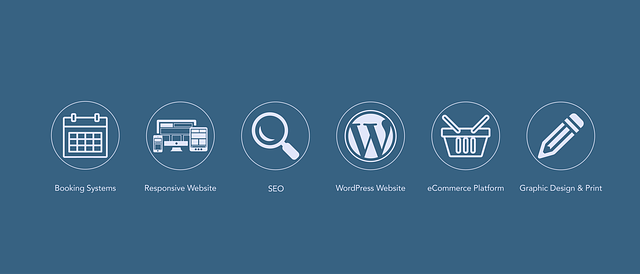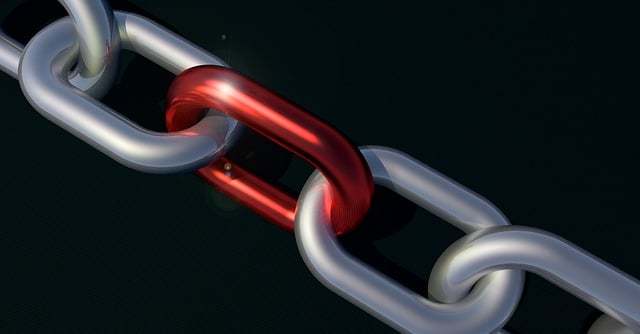Optimizing link equity distribution for WordPress sites is key to enhancing SEO performance. This involves strategic internal linking, fixing broken links, and ensuring a natural flow of value between pages. Using tools like Ahrefs, SEMrush, or Google Search Console, you can audit, identify, and rectify weak link structures, improve user experience, and boost site authority by focusing on relevant anchor text and categorically organized content. Regular monitoring allows for continuous improvement in link equity distribution and SEO rankings.
“Struggling with a site structure that’s letting your SEO down? This guide is your solution for fixing broken or weak internal linking issues. We’ll first demystify ‘link equity’—the backbone of effective internal linking—and its impact on search engine rankings. Then, we’ll walk you through identifying problem links, optimizing WordPress sites for better link equity distribution, and practical strategies to strengthen your site’s architecture. Discover tools tailored for efficient link audits and learn how to measure the success of your restructuring efforts.”
- Understanding Link Equity: The Foundation of Internal Linking
- Identifying Broken Links and Their Impact on SEO
- Optimizing for Link Equity Distribution in WordPress Sites
- Practical Strategies to Fix Weak Internal Linking Structures
- Tools and Techniques for Efficient Link Audit and Repair
- Measuring Success: Tracking Link Equity Post-Restructuring
Understanding Link Equity: The Foundation of Internal Linking

Internal linking isn’t just about connecting pages; it’s a strategic process that directly impacts your site’s overall search engine optimisation (SEO) strategy. At its core, understanding link equity distribution for WordPress sites is paramount. Link equity, or “link juice,” refers to the value passed from one page to another through internal links. This equitable distribution ensures that important signals are conveyed to both users and search engines about the relevance and importance of your site’s content.
In the context of WordPress, optimizing link equity distribution involves thoughtful planning and execution. Implementing effective link equity distribution tips can ensure every page on your site contributes positively to its overall authority. By focusing on strategic internal linking, you can guide both users and search engine crawlers seamlessly across your site, enhancing user experience while boosting SEO performance. This optimization process includes carefully selecting anchor text, ensuring a natural flow of links, and prioritizing high-quality, relevant content to maximize the benefits of link equity distribution SEO.
Identifying Broken Links and Their Impact on SEO

Identifying broken links within your website is a crucial step in optimizing its structure and performance for search engines. These issues can significantly impact your site’s SEO, as they disrupt user experience and signal to search algorithms that your content may be outdated or inaccessible. When internal links fail to load, search engine crawlers may struggle to index your pages properly, leading to reduced visibility in search results. Moreover, broken links can negatively affect the link equity distribution for WordPress sites, diluting the authority passed between pages.
By examining your website’s internal linking structure, you can uncover broken or weak links that hinder user navigation and SEO. The goal is to implement a strategic link equity distribution optimization plan by repairing or replacing these problematic links with relevant internal anchors. This involves using relevant anchor text and ensuring a logical flow of link equity distribution tips throughout your site’s hierarchy, ultimately strengthening your website’s overall authority in the eyes of search engines.
Optimizing for Link Equity Distribution in WordPress Sites

Optimizing for link equity distribution is a key aspect of SEO for WordPress sites. Link equity refers to the value passed from one page to another through backlinks, and it plays a crucial role in search engine rankings. In WordPress, proper internal linking strategies can significantly enhance this distribution. One effective tip is to use anchor text wisely; relevant keywords in anchor text help search engines understand the context of the linked pages.
Additionally, creating a hierarchical structure with a clear focus on category and tag pages ensures a strategic link equity distribution strategy. By interlinking these core pages with relevant posts, you can guide both users and search engine crawlers through your site’s content effectively. This approach not only improves navigation but also allows for better dissemination of authority and relevance signals throughout the website, contributing to improved SEO performance in the long run.
Practical Strategies to Fix Weak Internal Linking Structures

Fixing weak internal linking structures is crucial for distributing link equity effectively across your WordPress site. A practical strategy to begin with is conducting a comprehensive audit using SEO tools like Ahrefs or SEMrush, which will help identify broken links and low-quality anchor text. Once identified, these issues should be addressed promptly to prevent search engines from interpreting your site as untrustworthy.
Next, prioritize rebuilding internal links by creating a structured plan based on topic relevance and user experience. Ensure that each page has relevant incoming links from authoritative sources within your niche. This not only enhances link equity distribution for WordPress but also improves crawlability and search engine visibility. Implement these changes through a step-by-step process: update broken links, optimize anchor text, and create new internal links where necessary. Regularly monitor your site’s performance using tools like Google Search Console to track improvements in link equity distribution tutorial and SEO rankings.
Tools and Techniques for Efficient Link Audit and Repair

When addressing internal linking issues, a strategic approach is key. A comprehensive link equity distribution tutorial for WordPress sites involves utilizing specialized tools to efficiently audit and repair your site’s structure. These tools provide insights into broken or weak links, allowing for targeted adjustments that enhance user experience while optimizing link equity distribution.
A well-planned link equity distribution strategy starts with identifying problem areas through detailed analysis using plugins designed for this purpose. Once identified, you can implement targeted fixes, such as restructuring content to ensure relevant internal linking and properly updating broken links. This meticulous process, guided by the insights from your audit, helps in redistributing link equity effectively, ultimately strengthening your site’s SEO performance.
Measuring Success: Tracking Link Equity Post-Restructuring

After restructuring your site’s internal linking, measuring success involves tracking the distribution of link equity to ensure optimal performance. Link equity distribution for WordPress sites is a critical aspect of SEO that determines how much ‘link juice’ each page receives from incoming links. A well-restructured site should see a more even distribution, with authority flowing to relevant and important pages.
Utilizing tools like Google Search Console and analytics platforms can help you analyze the link equity distribution tutorial and understand post-restructuring changes. Regularly monitoring these metrics offers valuable insights into the effectiveness of your optimization efforts. Following best practices for link equity distribution tips—such as ensuring anchor text diversity, removing low-quality links, and prioritizing internal linking within relevant clusters—will contribute to a healthier site architecture and better SEO outcomes.
